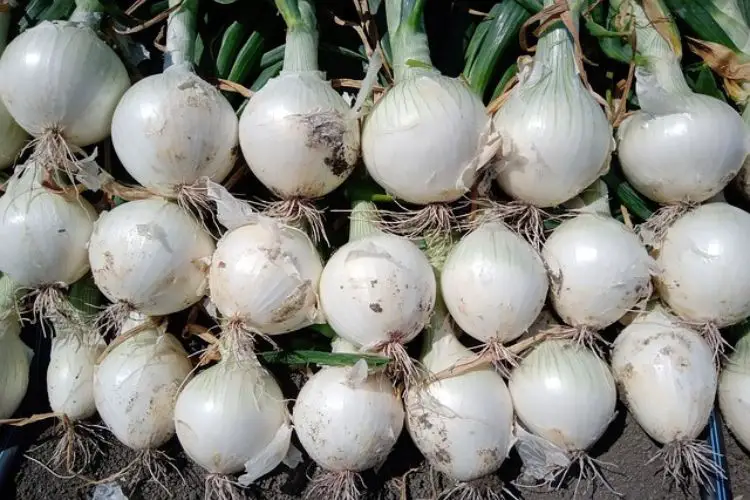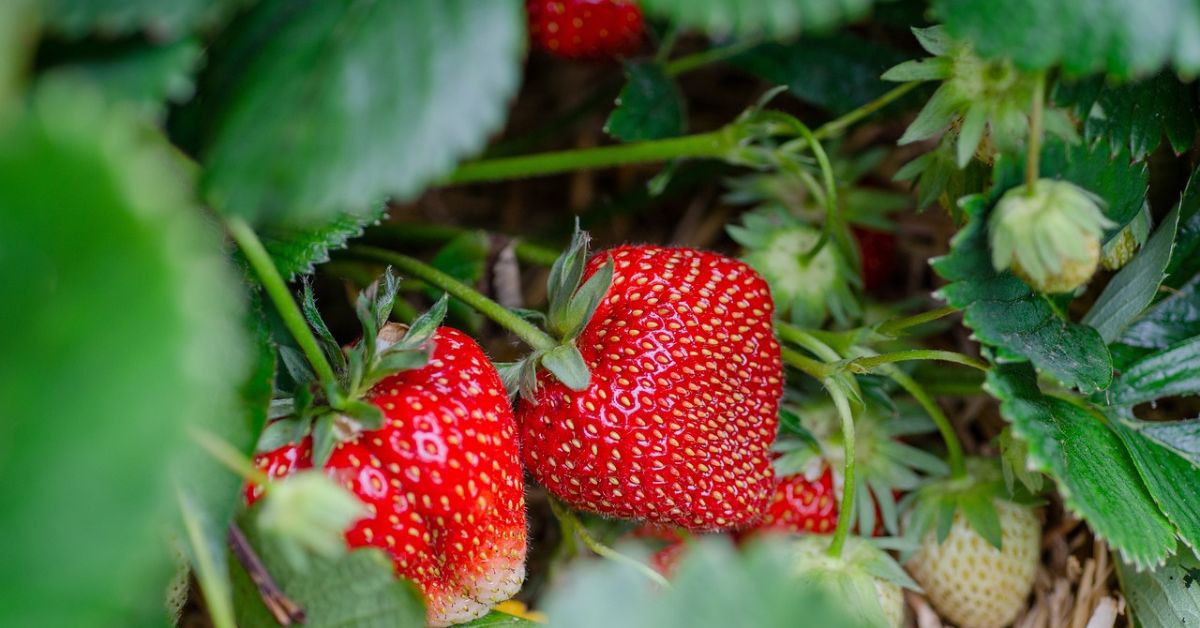Strawberries are a delightful addition to any garden, with their sweet, juicy fruits and pretty flowers.
But just like any other plant, strawberries have some picky preferences when it comes to their neighbors.
Some plants can stunt their growth or attract pests, so it’s crucial to be aware of which ones you should avoid planting near your strawberries.
In this article, I’ll share my personal experiences and discuss 12 plants you should avoid growing next to your strawberries to ensure a healthy, fruitful garden.
1. Cabbage

Cabbage, along with its Brassica family relatives like broccoli, cauliflower, and kale, isn’t the best companion for strawberries.
These plants can attract pests like aphids and caterpillars, which can then migrate to your strawberries and cause damage.
Additionally, the Brassica family prefers more alkaline soil conditions, while strawberries thrive in slightly acidic soil.
By planting them together, it can be challenging to create the ideal environment for both types of plants.
2. Tomatoes

Tomatoes, another popular garden favorite, can be detrimental to your strawberries.
Both plants are susceptible to a soil-borne disease called Verticillium wilt.
If you plant them near each other, you risk increasing the chances of this disease spreading between the two plants.
Moreover, tomatoes and strawberries have different watering requirements, which can make it difficult to provide the proper care for both.
Keep these two plants separate to maintain a healthy garden.
3. Potatoes

Potatoes, like tomatoes, are susceptible to Verticillium wilt.
Planting potatoes near your strawberries increases the risk of this disease spreading and harming your plants.
Additionally, potatoes and strawberries have different nutrient requirements, with potatoes being heavy feeders that can deplete the soil of nutrients that strawberries need.
For a thriving garden, plant strawberries and potatoes in separate areas.
4. Mint

While mint can provide a lovely aroma in your garden, it’s an aggressive grower and can quickly overtake neighboring plants.
Mint’s invasive nature can compete with your strawberries for nutrients, water, and space, leading to stunted growth and reduced yields.
If you want to grow mint, consider planting it in a container or a separate area of your garden to prevent it from invading your strawberry patch.
5. Grapes

Grapes and strawberries may both be delicious fruits, but they don’t make great neighbors in the garden.
Grapes can attract a pest called the Spotted Wing Drosophila, which can also infest and damage your strawberries.
Additionally, grapes have extensive root systems that can compete with strawberries for water and nutrients, potentially harming your strawberry plants.
To protect your strawberries, plant them away from grapevines.
6. Fennel

Fennel is another poor companion for most plants, including strawberries.
This herb releases compounds that can inhibit the growth of nearby plants, a process known as allelopathy.
The allelopathic effect of fennel can stunt the growth of your strawberry plants, leading to a less-than-satisfying harvest.
Keep fennel far away from your strawberries to ensure a bountiful berry crop.
7. Chives

Chives can be an excellent companion for many plants, but they’re not a good match for strawberries.
Chives release compounds that can deter pests, but they can also inhibit the growth of nearby plants, including strawberries.
This allelopathic effect can lead to stunted growth and reduced yields for your strawberry plants.
Plant chives in a separate area of your garden to avoid any negative effects on your strawberries.
8. Eggplant

Eggplants, like tomatoes and potatoes, are members of the nightshade family and are susceptible to Verticillium wilt.
Planting eggplants near strawberries increases the chances of this disease spreading to your strawberry plants.
Moreover, eggplants have similar nutrient requirements as strawberries, leading to competition and potentially affecting your harvest.
To keep your strawberries and eggplants healthy, give them their own space in the garden.
9. Garlic

Garlic can be a fantastic companion plant for many vegetables, but it’s not a good choice for strawberries.
Garlic can release compounds that inhibit the growth of other plants, including strawberries, leading to stunted growth and reduced yields.
To ensure your strawberries thrive, it’s best to plant them away from garlic.
10. Onions

Onions, like garlic, can release compounds that inhibit the growth of other plants, including strawberries.
This allelopathic effect can lead to stunted growth and reduced yields for your strawberry plants.
Keep onions in a separate area of your garden to avoid any negative effects on your strawberries.
11. Peppers

Peppers, another nightshade family member, can attract pests and diseases that affect strawberries.
Additionally, peppers and strawberries have similar nutrient requirements, leading to competition and reduced yields for both plants.
To maintain a healthy garden, plant strawberries and peppers in separate areas.
12. Cucumbers

Cucumbers aren’t directly harmful to strawberries, but they can attract cucumber beetles, which can carry bacterial wilt.
Bacterial wilt is a devastating disease that can spread to your strawberry plants, causing their leaves to yellow and wilt.
To reduce the risk of disease transmission, plant cucumbers and strawberries apart in your garden.
Additional Plants to Avoid Planting with Strawberries
In addition to the plants mentioned above, there are a few more you should avoid planting near your strawberries to maintain a healthy garden:
- Asparagus: Heavy feeder, competes for water and nutrients, different pH preferences
- Mustard: Attracts pests, prefers different soil pH
- Okra: Casts shade, attracts stink bugs
- Raspberries: Competes for nutrients, potential for cross-contamination of pests and diseases
Final Thoughts
Growing strawberries can be a joyful and delicious experience, but it’s crucial to select the right plant companions to support their growth.
By steering clear of the plants mentioned in this article, you’ll be well on your way to a thriving strawberry patch and a bountiful harvest.
Keep in mind that garden diversity is vital, so be sure to include a variety of supportive and complementary plants.
Happy gardening!

